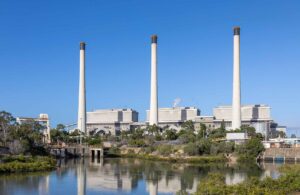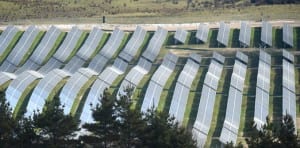The fight against a large-scale solar and battery project in central Victoria is heating up after a local council sided with upset residents and voted to oppose the increasingly controversial Cooba solar farm.
Canadian developer Venn Energy wants to build the 500 megawatt (MW) Cooba solar farm and 300 MW battery, duration currently unknown, which would be located 4.5km south of the town of Colbinabbin.
Anxiety in the community has been rising all year about the proposal, manifesting in an online petition against it and worries that the 700,000 panels might create a “heat island” effect which could affect neighbouring vineyards. Similar concerns at other projects about “heat island” impacts have been debunked.
The concerns also range from the removal of farming land from production, the visual impact of 665 hectares of solar panels, and claims that the economic benefits are not clear.
Last week, the Campaspe Shire Council voted to oppose the planning application for the project.
However, under Victoria’s accelerated planning rules introduced in March, it can’t reject the project. The final decision lies with state planning minister Sonya Kilkenny.
Instead, the council is lodging a submission to the minister outlining its concerns, which is the first of its kind in the area, and asking her to reject the planning application.
“Whilst we fully support solar energy facilities in suitable locations, we feel that the Cooba Solar Farm’s proposed site and unresolved issues make it an unsuitable choice,” said Campaspe Shire Mayor Daniel Mackrell in a statement following the decision last week.
“Council has been advocating against this location for many months and provided supporting information to all members of the Legislative Council during its regional sitting in April in Echuca.”
But while the council and local residents are concerned about farming land being turned over to energy production, the planning application documents suggest the project is further advanced in retaining the acreage’s agricultural heritage than many others.
The planning application says all cabling will be underground, removing the potential for cable-related hang ups, and an agricultural report outlines the water and fencing requirements needed to run sheep.
It does, however, plan to use a single axis tracker system, which is cheaper but sits lower to the ground at its ebb than a dual axis tracker.
Most solar energy proposals mention running sheep under solar panels as an option but few include them in the early stage design, a factor critical for animal safety and ease of grazing.
Venn Energy has set aside a $200,000 annual fund for its community benefits scheme for when the solar farm is commissioned, a date expected in 2027.
The community has been promised five to six permanent jobs will come out of the 30 year project.
Venn Energy did not respond to questions.








